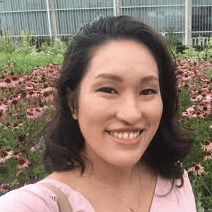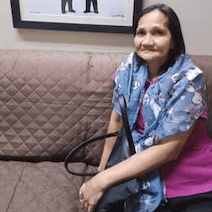SUMMARY
This is AI generated summarization, which may have errors. For context, always refer to the full article.
![[ANALYSIS] The situation in Barangay 178, Camarin during the coronavirus crisis](https://www.rappler.com/tachyon/r3-assets/612F469A6EA84F6BAE882D2B94A4B421/img/D6C4D59829AC4FD1A255ABE5603F44A5/part-one---the-situation-in-camarin-april-28-2020.jpg)
The following is Part 1 in a two-part series on the state of a community in Camarin, Caloocan City during the coronavirus crisis.
You can read Part 2 here.


“I am a pakialamera,” says Ate Malou, a senior citizen and grandmother of 8. “I walk around the neighborhood chatting with neighbors, getting to know them better so I can understand them and their lives. With this lockdown, all we can do is discuss the community situation on our cellphones, disseminate information through group texts, listen to one another’s grievances, help the barangay carry out its programs, and look for solutions to our problems.”
Having established herself as a focal point for local issues and concerns, Ate Malou, as she is called, is ready to help the many among the Camarin Balikatan Community Association’s 450 families who discuss their problems, needs, and other concerns with her. It helps that she is also a Barangay 178 sitio leader.
As of April 22, two deaths out of 5 confirmed cases have been reported there officially. The community had dealt with more deaths during tokhang, she remarks. At least with this pandemic, the victims have a fighting chance to live. Although two deaths look small, it may just be the start of what lies ahead for the community. People are being prepared to know and carry out the protocols for COVID-19. That means when a resident is identified as a Person Under Investigation (PUI), the barangay is informed. Officials in turn report the case to health officers in the city. The health officers will call and decide if they should take the PUI to a hospital for testing. If the PUI has a family, the barangay officials guard their house. No one can leave or enter but the family is given food. The barangay also offers protection, cordoning itself off from outsiders to regulate the flow of people. Volunteers are assigned to keep watch. (READ: [FIRST PERSON] Beyond health: The virus’ impact on the people of Del Pan Bridge)
For now, what is preoccupying people’s minds is not really the virus but that all of a sudden, the means of support for their families was suddenly knocked out from under their feet. Losing jobs and income almost overnight left them to face tremendous difficulties without any solid plans to rely on. Fearing for their health and with the economy at a standstill, being kept from going out to buy or look for food compounds the problem. Despite these troubles, “leaders like us in people’s organizations are practicing the bayanihan spirit. We help one another work with the government and try to keep our hopes up in the face of an uncertain future. We are doing our part, and call on benefactors to continue helping, donating, and providing assistance so that fellow Filipinos like us survive this crisis.”
In Brgy. 178 Camarin, people are divided as to whether the government’s actions to address the health crisis are enough for everyone. The issue is not so much which government actions are correct or not, but rather what is the community’s best strategy for survival. Should they choose to rely on government completely, turn to private companies, or find their own means of addressing the current situation and uplifting the community spirit? While verified information on the crisis needs to come from the mayor, Ate Malou cannot help but do the usual informal chikahan (chatting) and kwentuhan (experience sharing) through friendly calls among neighbors or via cellphone. Though not approved by COVID-19 measures, this social practice ensures that community members know about the PUIs in their barangays as well as learn about any deaths even if not from COVID-19. She also informs them of the kinds of assistance they are to receive, and what they need to do to get benefits. In effect, her conversations and walks around the community as a sitio leader and secretary of Balikatan become an informal check and balance of what the government has been doing, and whether or not people have been receiving targeted benefits.
So far, as of April 21, only two waves of food packs have come, the first from the Barangay and the second from City Hall. Yet other barangays have had up to 4 waves of food packs, to the community’s dismay. In her chikahan forays, Ate Malou learned that when people receive different types and amounts of goods, some cannot help but compare and complain if they feel discriminated against. On the contrary, others deliberately express their generosity in choosing not to avail of donated food so it can be allocated to their needier neighbors. (READ: [ANALYSIS] Releasing names of SAC beneficiaries can bolster accountability)
The Caloocan City Mayor’s information on Facebook shows that not every barangay is given the same package. Ate Malou comments, “People here can be hotheaded; they love to compare. If a city is richer, of course what it gives its residents will be different from what a poorer city gives! They don’t understand or accept that. Priorities must be set for those who really need it. Still there are people who resent that, especially if they believe they are among the most in need but were not helped. People always tend to think that way – they already have but want more.”
Clearly, the most immediate concerns are economic. 90% of the community members have lost their jobs. These include work in both the informal sector and company jobs. Some who have kept their positions are those in the delivery and health sectors. Construction workers, who make up a majority of the male workers, fear they no longer have contracts. For some, their companies continue to send them rice.
Implementing laws and programs for the poor announced by President Duterte on the radio and TV to address job and income loss emerge as the most pressing issue. Anticipating from the beginning of the lockdown the need for financial assistance, Ate Malou and her Balikatan members drew up a list of those who had lost their jobs and expected government cash assistance. “I hoped what Duterte was saying is all true. So, I decided to be proactive by finding out more about it and verifying if it will prove true or not. All we can do for now is wait.”
A week after they heard about the cash assistance through the DSWD and LGU, the barangay enlisted the help of presidents of local associations and people’s organizations to distribute the application forms. Balikatan received only 100 Social Amelioration Cards for its 450 family members in Sitio Uno. Balikatan is only one organization within Sitio Uno of Brgy 178. Malou’s association decided to follow the clusters their NGO partner, Urban Poor Associates, had earlier established to organize their community. (READ: [OPINION] Learning from Kagawad Jonjon Elago)
Their constituents were divided into 9 geographical clusters. Each set would receive at least 10 forms and would have to determine its distribution strategy for the forms in a fair manner to those who needed them the most. Only those with forms can receive the cash assistance. Within clusters, several families and neighbors reached an agreement to share one form and divide up the proceeds. Families given priority assistance are those whose members have no work. Typically, these are families whose breadwinners have lost income in the informal sector, like labanderas (laundrywomen), house help, manicurists, sidewalk vendors, drivers, conductors, and construction workers. Distribution logistics prove most challenging because of the population density. – Rappler.com
Marilou Aquino is a housewife and community leader. She was Business Manager of Camarin Balikatan Community Association Inc. for 11 years before becoming its Secretary in 2011. In 2004 the Caloocan Mayor appointed her a Sitio Uno leader of Brgy 178.
Regina Bautista is pursuing a PhD in Anthropology at the University of the Philippines-Diliman. She is a lecturer in ballet and dance studies, and is Managing Director of the Cultural Center of the Philippines Choreographers Series.
Bautista was introduced to and interviewed Aquino through Urban Poor Associates as part of the Engaged Anthropology class of Prof. Mary Racelis. Aquino verified and approved the write-up prepared by Bautista. The authors would also like to acknowledge Prof. Racelis’ guidance and feedback throughout the writing of this article.
Add a comment
How does this make you feel?
There are no comments yet. Add your comment to start the conversation.